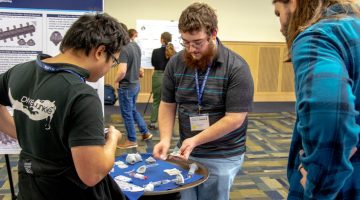Understanding Squid and Food Chain Dynamics in the Gulf of Maine
By Stefania Irene Marthakis “Maine-eDNA was one of my main inspirations to continue to study Zoology at the University of Maine, Decorey Bolton Jr. said. “I’m especially interested in animal’s behavioral patterns, how different environmental factors are affecting their movement patterns, and their interactions with other animals.” DeCorey Bolton Jr. is an alumni and now […]
Read more









